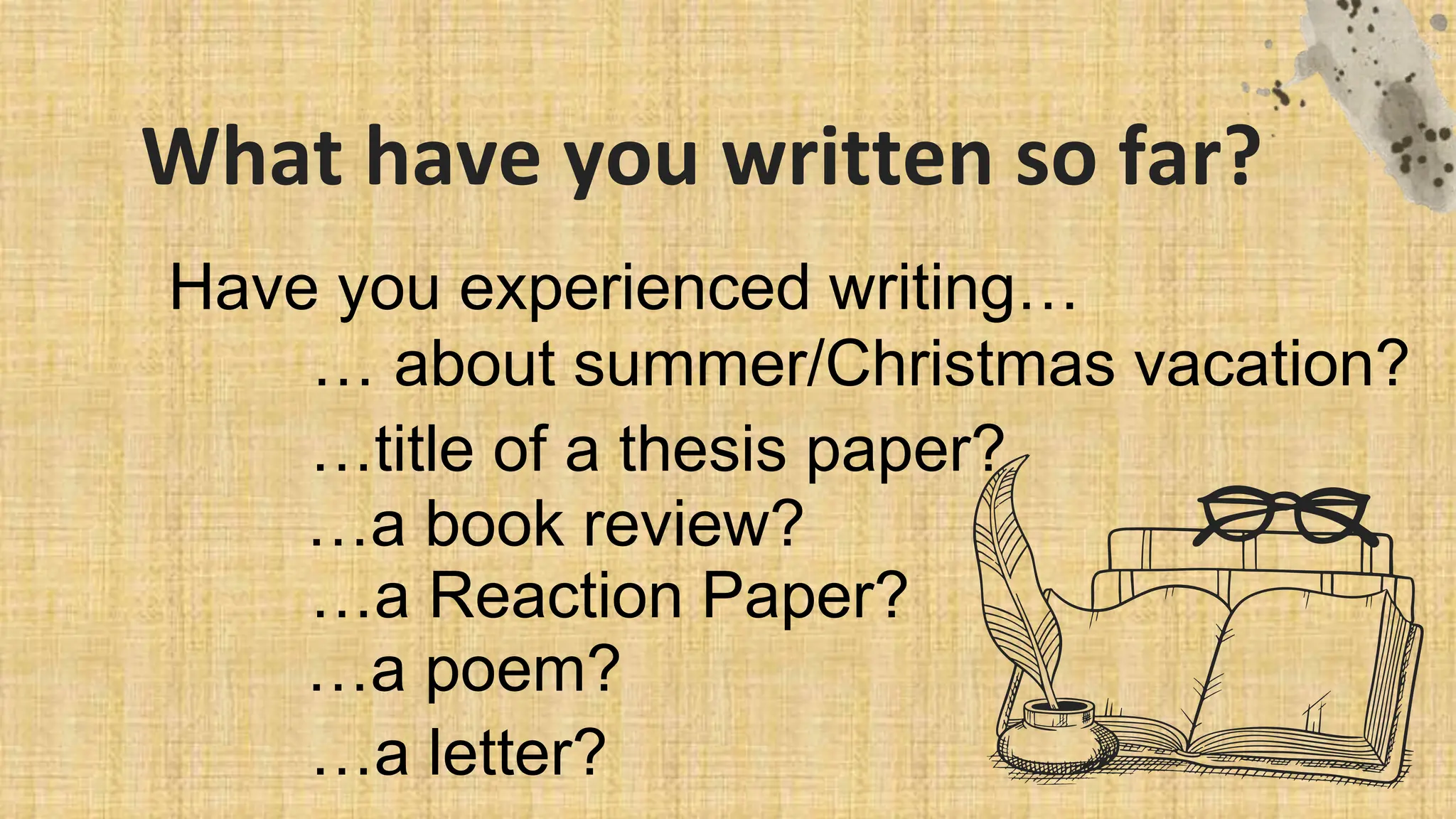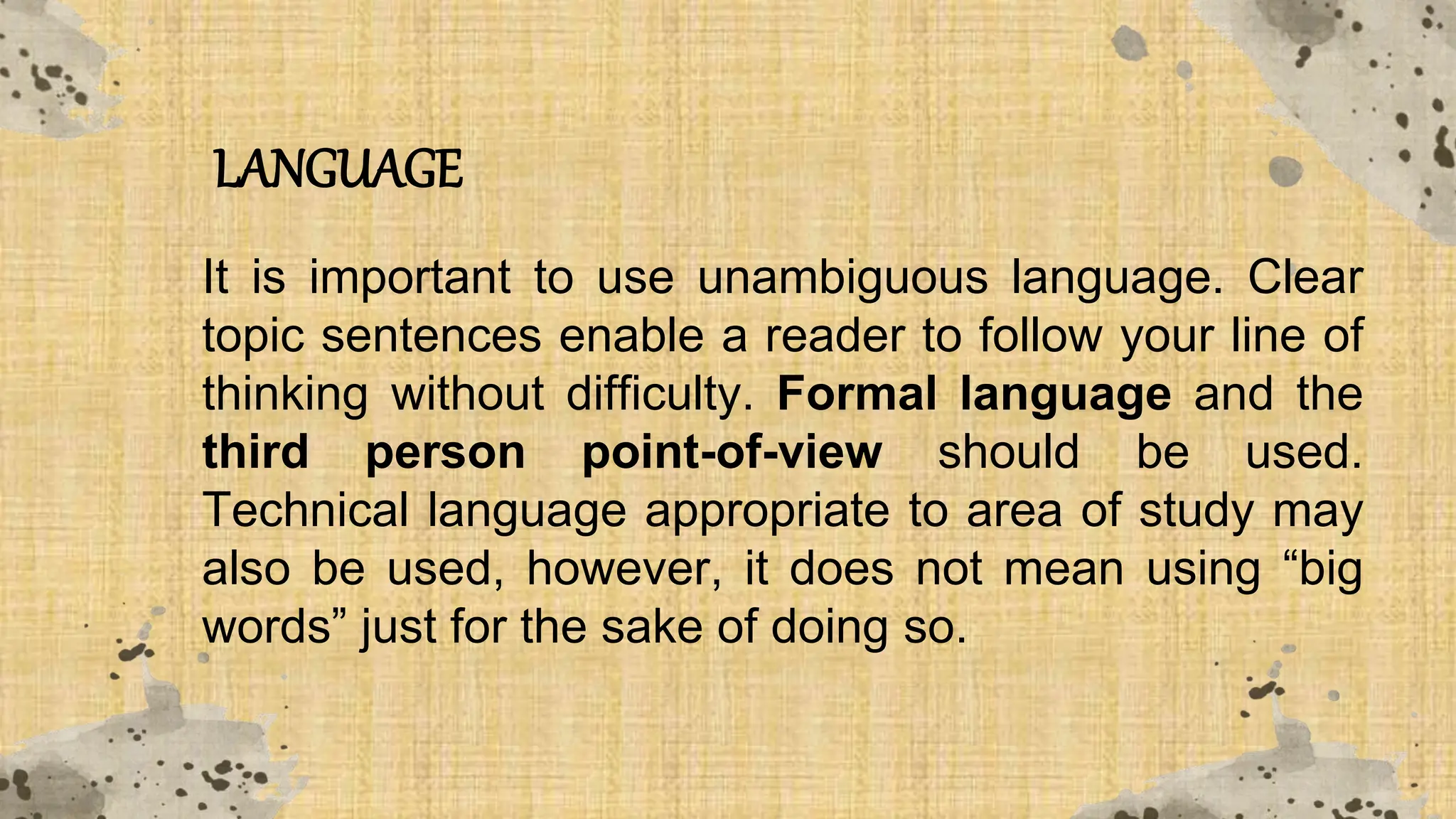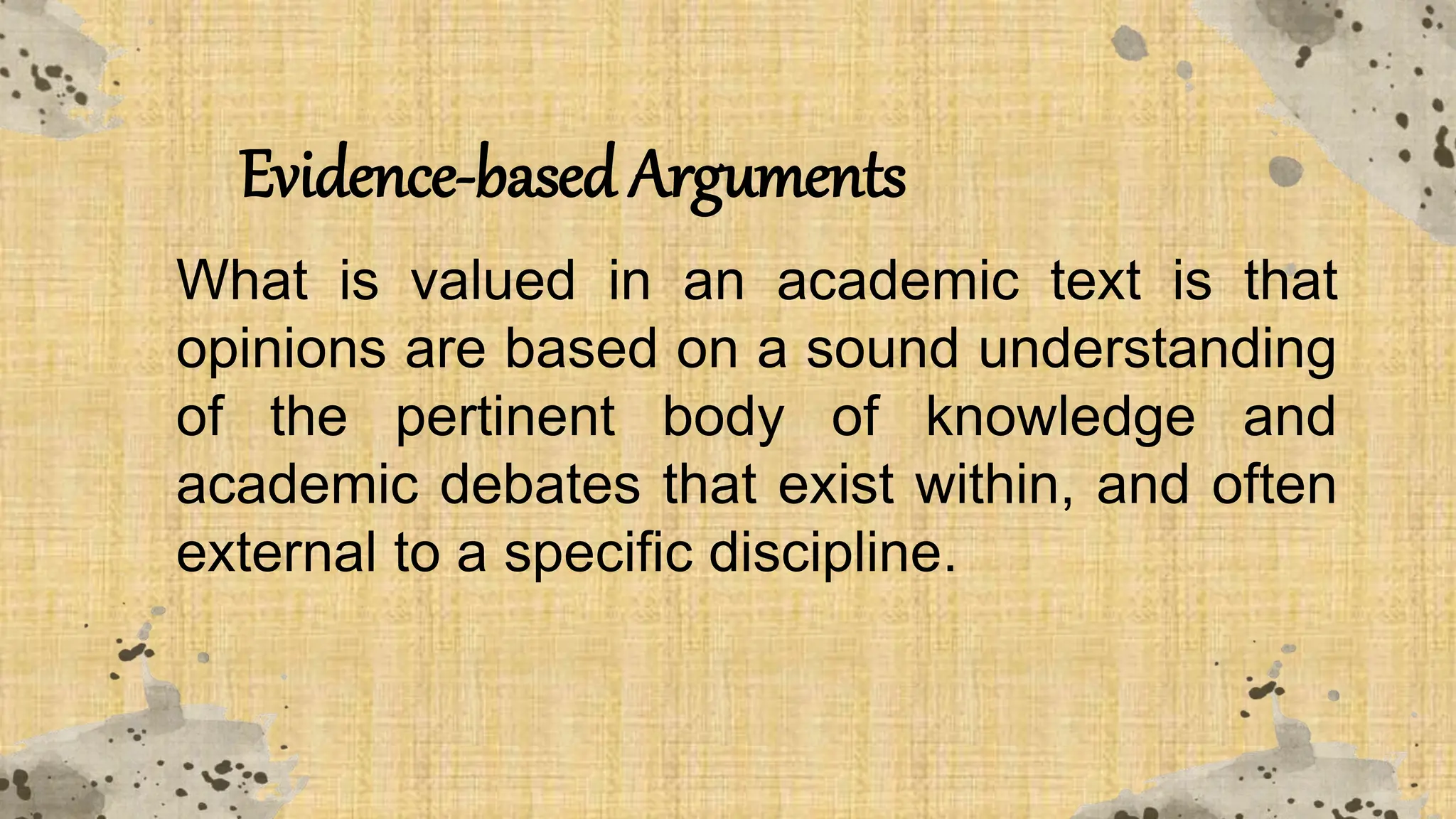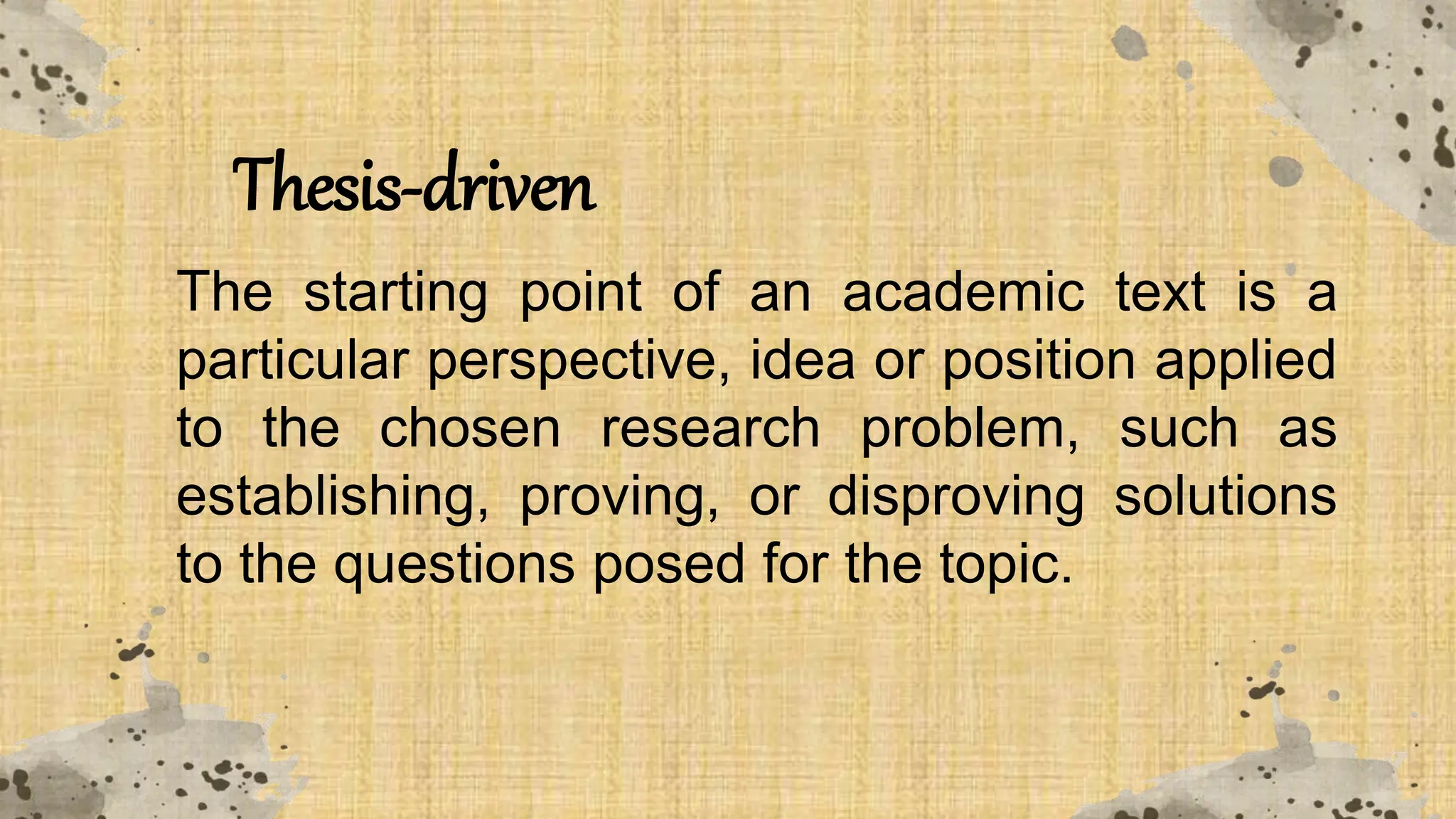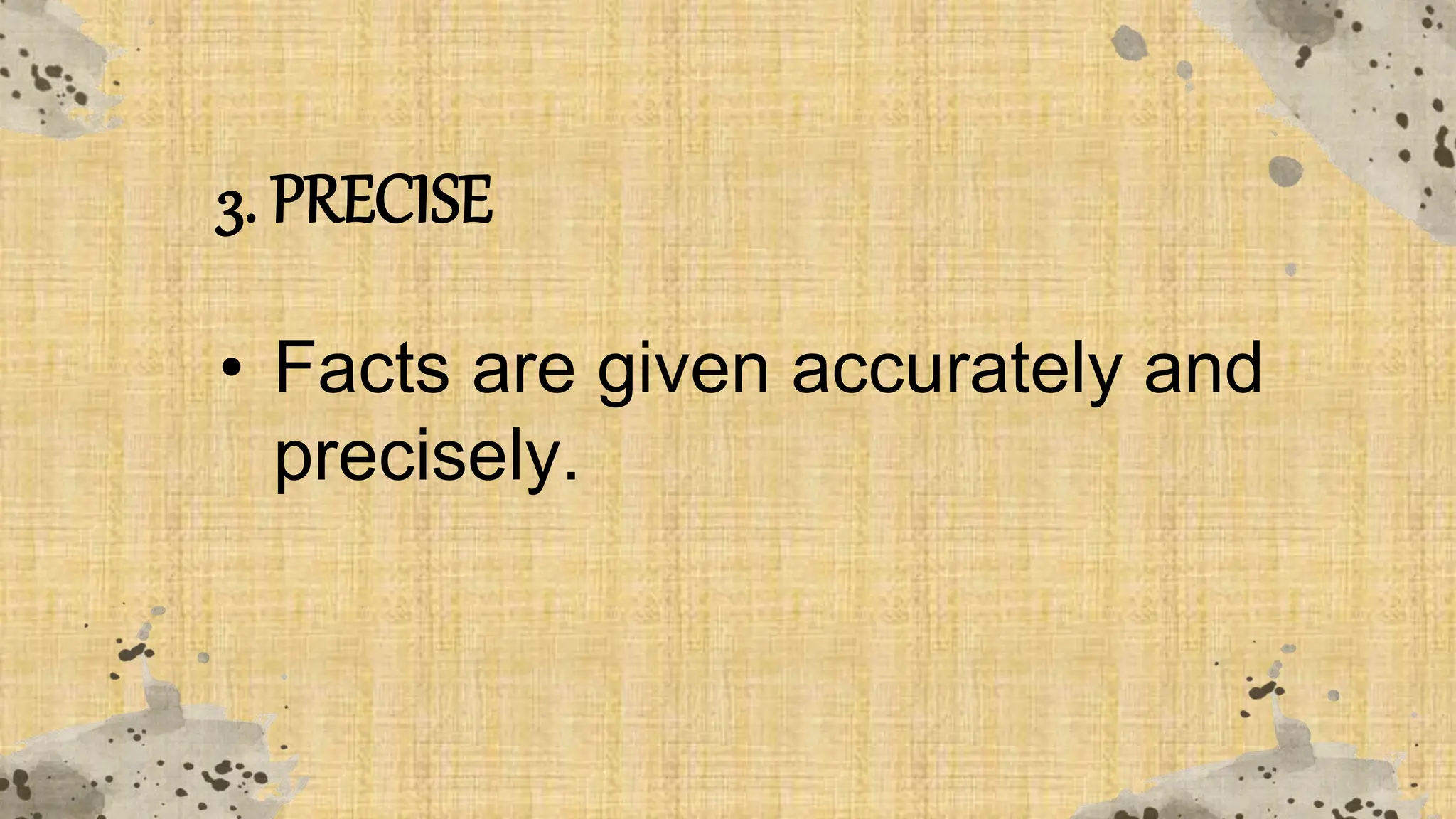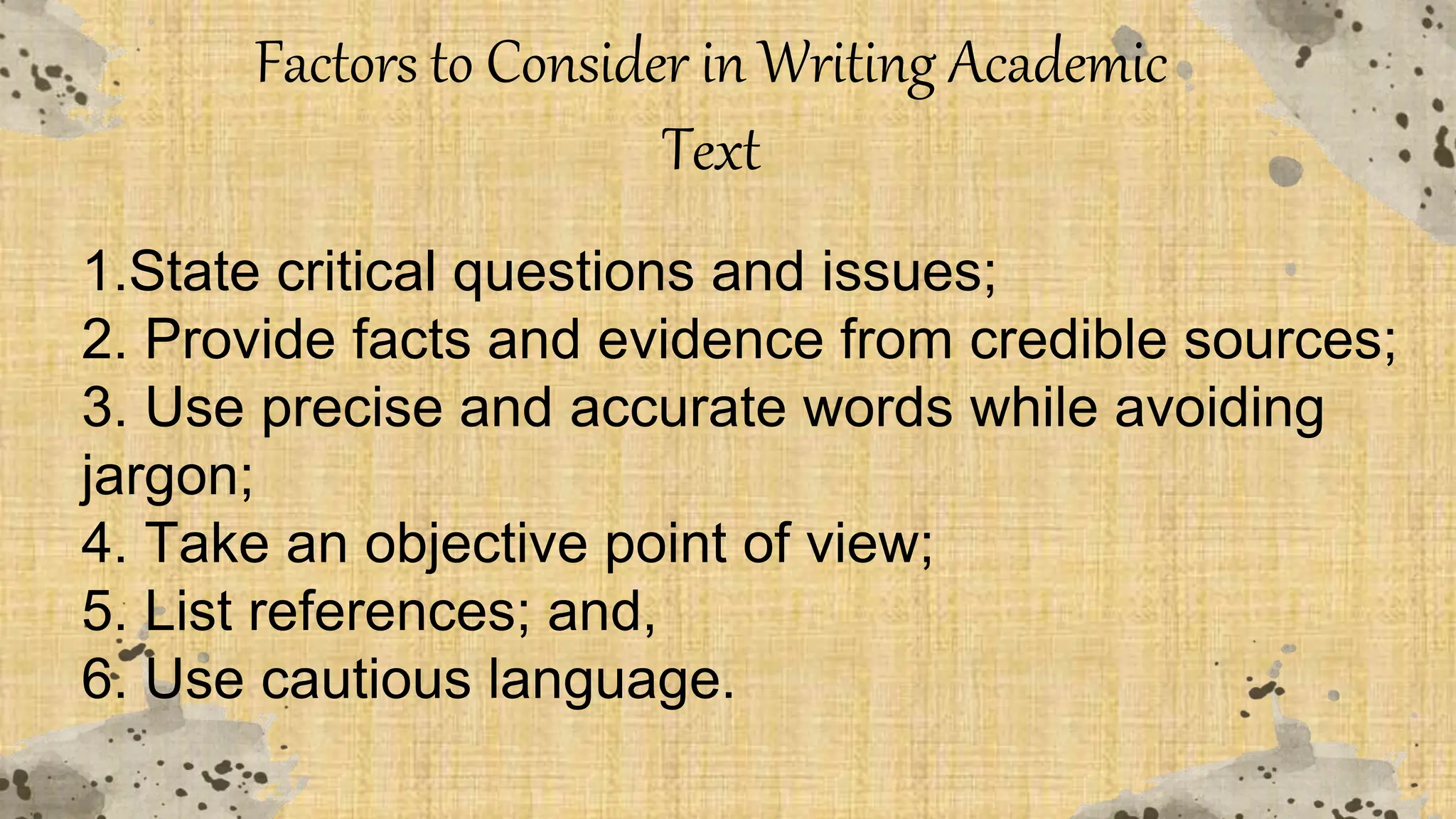An academic text is defined as being formal, objective, and evidence-based writing intended for a scholarly audience. It has a clear structure consisting of an introduction, body, and conclusion and uses precise language, citations, and a thesis-driven perspective. In contrast, non-academic texts have less rigid structures, more subjective tones, and focus on entertainment or personal experiences over validating ideas or research. Examples of academic texts include research papers and theses, while non-academic texts may be diaries, informal essays, or personal letters.

